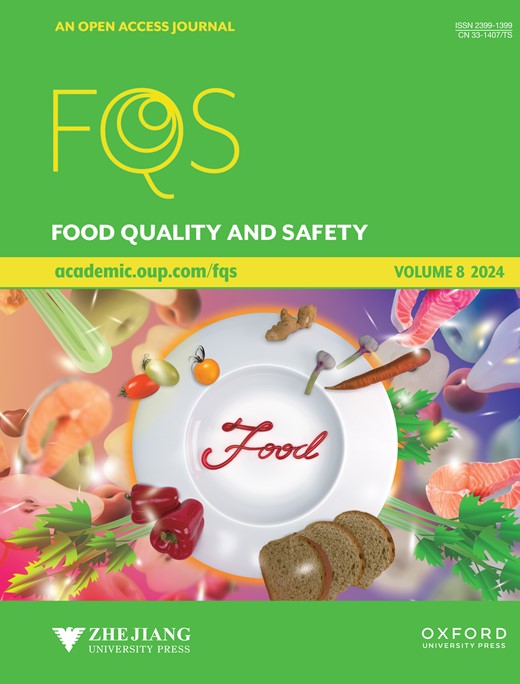Microbial Populations, Sensory and Volatile Compounds Profiling of Local Cooked Rice
IF 4.4
3区 农林科学
Q2 FOOD SCIENCE & TECHNOLOGY
引用次数: 0
Abstract
This study is designed to investigate the microbial populations, sensory and volatile compounds profiling of locally cooked rice stored at room temperature (30 °C) on days 0, 1, 2 and 3 (D0, D1, D2 and D3) for the determination of its specific spoilage organisms (SSOs). Microbiological analysis showed the presence of spore-forming bacteria, yeast and moulds, which survived the cooking process. While Total Viable Count (TVC) exceeded the microbiological limit at 6.90 log CFU/g on D3, panellists deemed cooked rice unacceptable for consumption on D2 at a total sensory score of 11.00 which concludes D2 as the day cooked rice became spoiled. Through culture-dependent and culture-independent methods, Bacillus cereus was identified as the sole bacteria observed throughout the storage period confirming the bacteria as the SSO. The Volatile Organic Compounds (VOCs) analysis proposed several metabolites; 3-eicosene, 1-heptadecene, hexacosane, phenol, 4,4'-(1-methylethylidene)bis-, n-nonadecanol-1 and cyclohexanone as potential spoilage markers of cooked rice, that might be responsible for the off-odour produced by B. cereus during spoilage of cooked rice.本地熟米的微生物种群、感官和挥发性化合物分析
本研究旨在调查在室温(30 °C)下储存 0、1、2 和 3 天(D0、D1、D2 和 D3)的本地熟米饭的微生物种群、感官和挥发性化合物分析,以确定其特定的腐败微生物(SSOs)。微生物分析表明,烹饪过程中存在芽孢形成细菌、酵母和霉菌。虽然 D3 的总存活数(TVC)超过了微生物限量(6.90 log CFU/g),但小组成员认为 D2 的感官总分为 11.00,不可接受,因此认为 D2 是熟米饭变质的日子。通过依赖培养和不依赖培养的方法,确定蜡样芽孢杆菌是整个储存期间观察到的唯一细菌,从而确认该细菌为 SSO。挥发性有机化合物(VOCs)分析认为,3-二十烯、1-十七烯、二十六烷、苯酚、4,4'-(1-甲基亚乙基)双、正壬烷醇-1 和环己酮等几种代谢物是熟米潜在的变质标志物,它们可能是蜡样芽孢杆菌在熟米变质过程中产生异味的原因。
本文章由计算机程序翻译,如有差异,请以英文原文为准。
求助全文
约1分钟内获得全文
求助全文
来源期刊

Food Quality and Safety
FOOD SCIENCE & TECHNOLOGY-
CiteScore
7.20
自引率
1.80%
发文量
31
审稿时长
5 weeks
期刊介绍:
Food quality and safety are the main targets of investigation in food production. Therefore, reliable paths to detect, identify, quantify, characterize and monitor quality and safety issues occurring in food are of great interest.
Food Quality and Safety is an open access, international, peer-reviewed journal providing a platform to highlight emerging and innovative science and technology in the agro-food field, publishing up-to-date research in the areas of food quality and safety, food nutrition and human health. It promotes food and health equity which will consequently promote public health and combat diseases.
The journal is an effective channel of communication between food scientists, nutritionists, public health professionals, food producers, food marketers, policy makers, governmental and non-governmental agencies, and others concerned with the food safety, nutrition and public health dimensions.
The journal accepts original research articles, review papers, technical reports, case studies, conference reports, and book reviews articles.
 求助内容:
求助内容: 应助结果提醒方式:
应助结果提醒方式:


